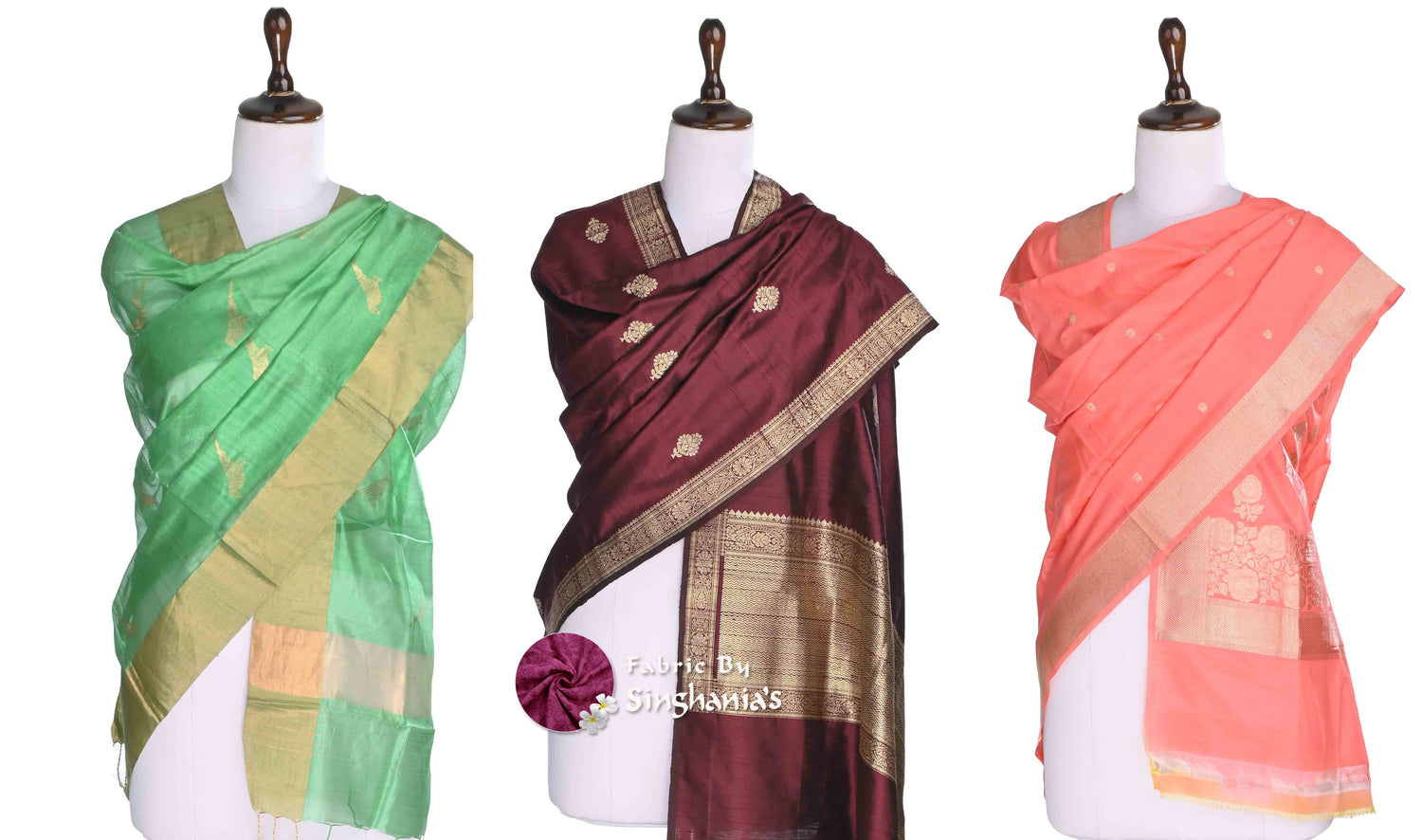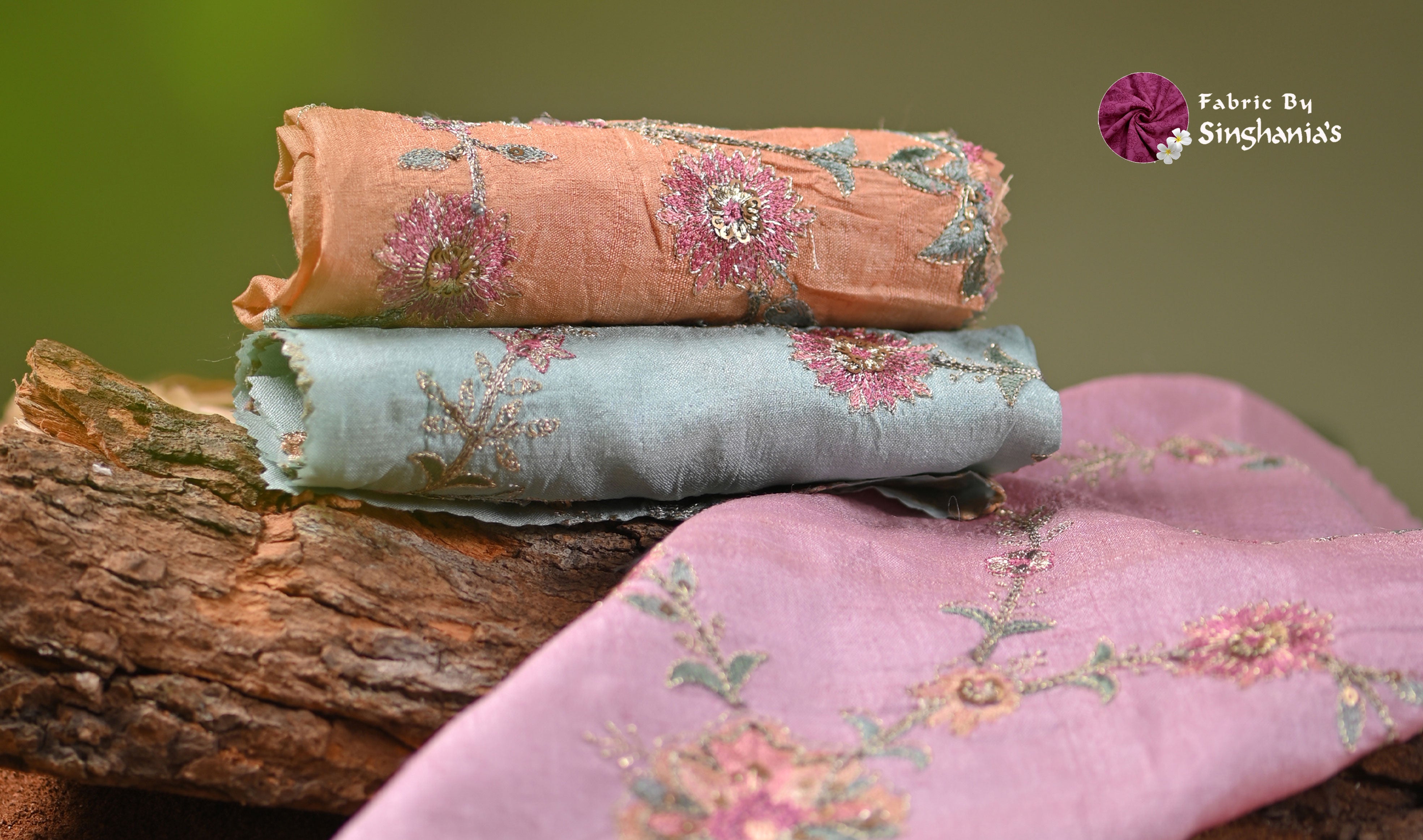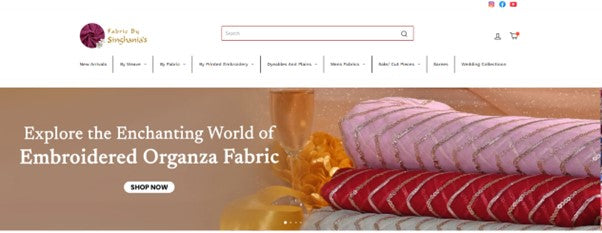
The dupatta, a long scarf or shawl-like garment, has been an integral part of women's attire in the Indian subcontinent for centuries. A Banarasi dupatta holds a unique charm that can instantly elevate any ethnic outfit. It not only adds charm to an outfit but also highlights the beautiful artistry of Banaras. A city renowned for its luxurious silk fabrics and intricate weaving techniques. In this blog, we will get to know the importance of a dupatta, explore its variations, and discover various ways to style a Banarasi dupatta
Why Wear a Dupatta?
Understanding its significance:
For women, draping a dupatta adds an element of gracefulness to their attire while symbolizing modesty and femininity. It also symbolizes tradition and culture. It has the power to transform any outfit, be it a simple salwar kameez or a lehenga choli, into a stunning outfit for any occasion. Moreover, a dupatta serves as a versatile accessory that can be styled in numerous ways, allowing one to explore their creativity and personalize their look.
Differentiating Dupatta, Chuni, and Odni:
It is essential to understand the subtle differences between a dupatta, chuni, and odni. While the terms are often used interchangeably, they do possess distinct characteristics.
- Dupatta: The word "dupatta" is derived from the Persian word "do-patta," which means "two pieces of cloth." A dupatta is typically a long rectangular or square-shaped piece of fabric, often adorned with intricate embroidery or embellishments. It can be worn over the shoulder, draped across the chest, or wrapped around the neck, depending on regional customs and personal preferences.
- Chuni: The term "chuni" is primarily used in regions like Punjab and Rajasthan. It refers to a shorter, lighter, and narrower version of a dupatta. Usually made of chiffon or georgette, a chuni is often draped around the neck or over the shoulder, accentuating the torso.
- Odni: An "odni" is a similar garment to a dupatta but is generally longer and wider. It is commonly worn in regions like Gujarat and Rajasthan, where it is draped over the head, covering the face and body partially or fully, signifying modesty and respect.
Styling a Banarasi Dupatta: Unleash Your Creativity!
- Classic Draped Look: The most common way to wear a Banarasi dupatta is to drape it over one shoulder and let it flow gracefully across the body, either pinned to the opposite shoulder or left loose. This style works wonders with a wide range of outfits, such as sarees, lehengas, or even a simple salwar kameez. Pair it with matching accessories and traditional jewellery to complete the traditional look.
- Belted Magic: Add a modern finish to your traditional attire by belting your Banarasi dupatta around the waist. This creates a defined waistline and adds structure to your ensemble. It works exceptionally well with lehengas and anarkalis.
- Hijab: Channel your inner diva by draping your Banarasi dupatta over your head as a hijab. This style not only exudes elegance but also provides modest coverage.
- Experimental Capes: Transform your dupatta into a chic cape by fastening it at the back of your neck. This style is perfect for those who want to showcase the all the details of their Banarasi dupatta.
- Lehenga Skirt: If you have an extra Banarasi dupatta, try using it as a skirt while pairing it with a contrasting blouse or crop top. Simply wrap the dupatta around your waist and secure it with a waistband, or tuck it in on one side for a more relaxed boho look. This versatile style is perfect for festive occasions or even a casual day out.
- Dupatta as a Scarf: Banarasi dupattas can also be styled with western outfits. Use your Banarasi dupatta as a stunning scarf for a plain dress or a simple top. Experiment with different draping techniques and let the dupatta steal the show. This style is perfect for formal events or adding a pop of color to your everyday outfits.
- Dupatta as a Statement Piece: For those looking to make a bold fashion statement, transform your Banarasi dupatta into an eye-catching cape. Drape it over your shoulders and secure it with a brooch or pin at the front. This style gives an instant royal touch to your outfit and is perfect for special occasions or weddings. Pair it with a plain outfit to let the dupatta shine as the centerpiece.



